Giuseppe Argenziano
Diagnostic Accuracy of Content Based Dermatoscopic Image Retrieval with Deep Classification Features
Oct 22, 2018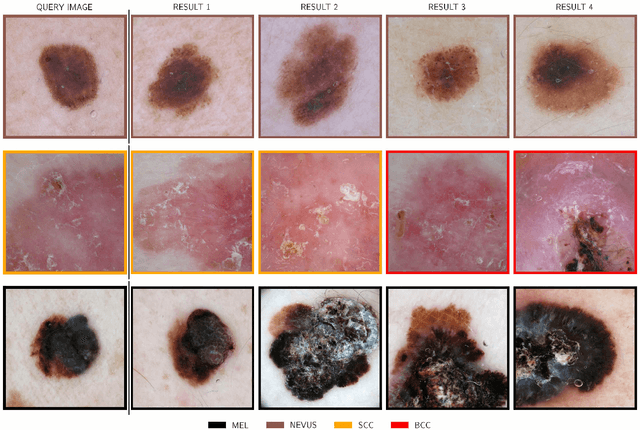
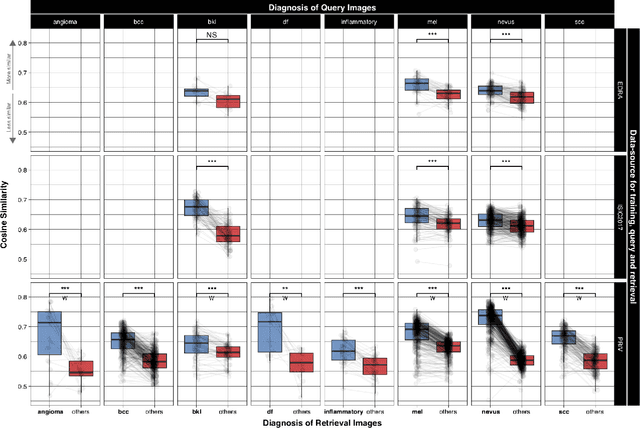
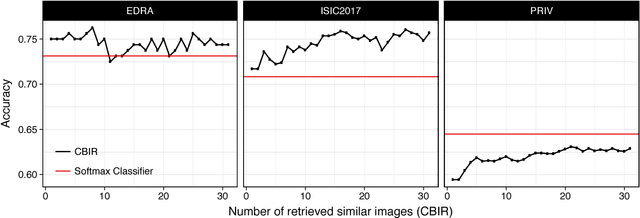
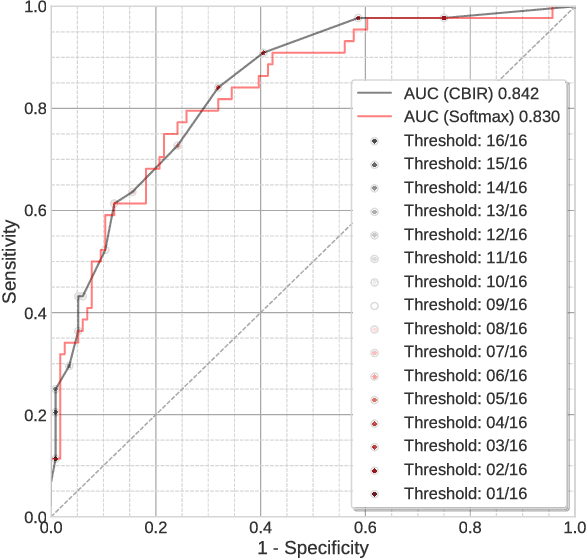
Abstract:Background: Automated classification of medical images through neural networks can reach high accuracy rates but lack interpretability. Objectives: To compare the diagnostic accuracy obtained by using content based image retrieval (CBIR) to retrieve visually similar dermatoscopic images with corresponding disease labels against predictions made by a neural network. Methods: A neural network was trained to predict disease classes on dermatoscopic images from three retrospectively collected image datasets containing 888, 2750 and 16691 images respectively. Diagnosis predictions were made based on the most commonly occurring diagnosis in visually similar images, or based on the top-1 class prediction of the softmax output from the network. Outcome measures were area under the ROC curve for predicting a malignant lesion (AUC), multiclass-accuracy and mean average precision (mAP), measured on unseen test images of the corresponding dataset. Results: In all three datasets the skin cancer predictions from CBIR (evaluating the 16 most similar images) showed AUC values similar to softmax predictions (0.842, 0.806 and 0.852 versus 0.830, 0.810 and 0.847 respectively; p-value>0.99 for all). Similarly, the multiclass-accuracy of CBIR was comparable to softmax predictions. Networks trained for detecting only 3 classes performed better on a dataset with 8 classes when using CBIR as compared to softmax predictions (mAP 0.184 vs. 0.368 and 0.198 vs. 0.403 respectively). Conclusions: Presenting visually similar images based on features from a neural network shows comparable accuracy to the softmax probability-based diagnoses of convolutional neural networks. CBIR may be more helpful than a softmax classifier in improving diagnostic accuracy of clinicians in a routine clinical setting.
Automatic Detection of Blue-White Veil and Related Structures in Dermoscopy Images
Sep 06, 2010
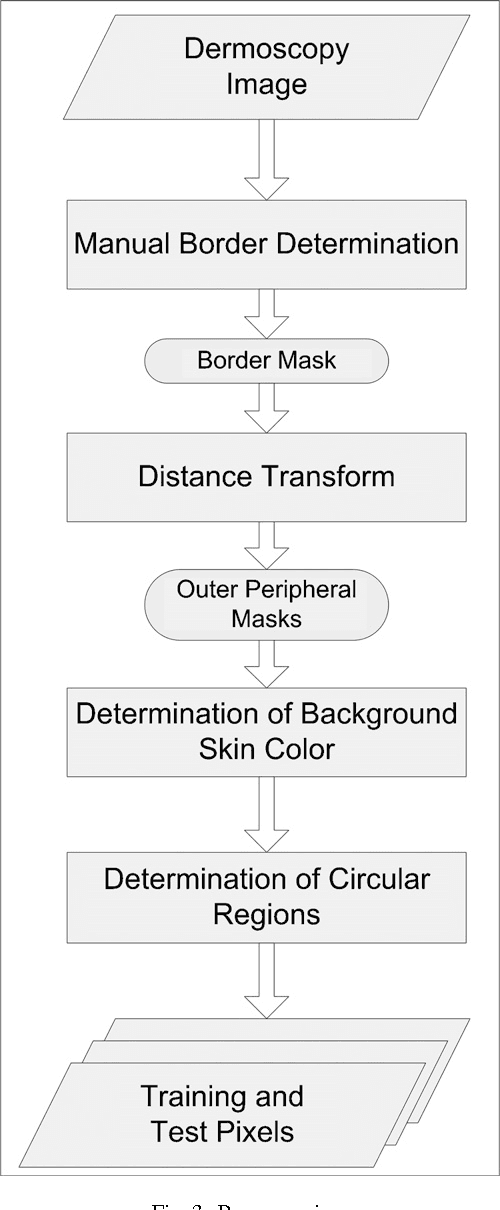
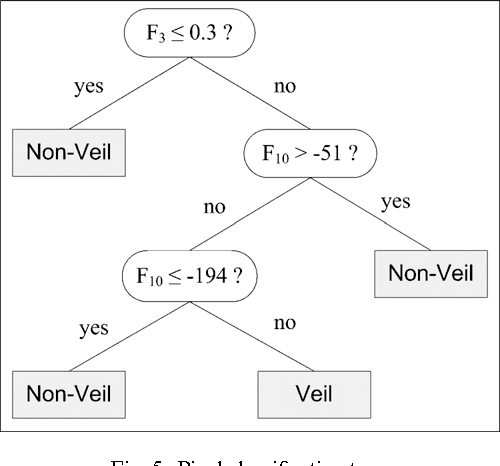
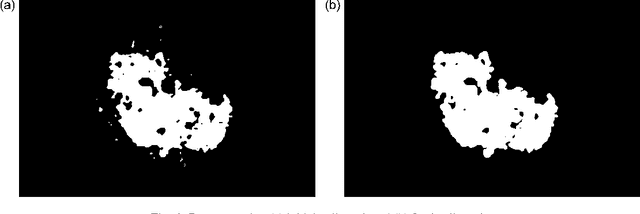
Abstract:Dermoscopy is a non-invasive skin imaging technique, which permits visualization of features of pigmented melanocytic neoplasms that are not discernable by examination with the naked eye. One of the most important features for the diagnosis of melanoma in dermoscopy images is the blue-white veil (irregular, structureless areas of confluent blue pigmentation with an overlying white "ground-glass" film). In this article, we present a machine learning approach to the detection of blue-white veil and related structures in dermoscopy images. The method involves contextual pixel classification using a decision tree classifier. The percentage of blue-white areas detected in a lesion combined with a simple shape descriptor yielded a sensitivity of 69.35% and a specificity of 89.97% on a set of 545 dermoscopy images. The sensitivity rises to 78.20% for detection of blue veil in those cases where it is a primary feature for melanoma recognition.
 Add to Chrome
Add to Chrome Add to Firefox
Add to Firefox Add to Edge
Add to Edge